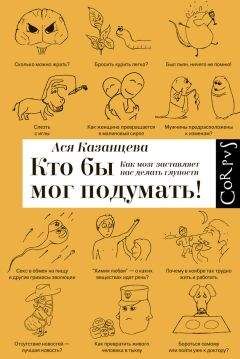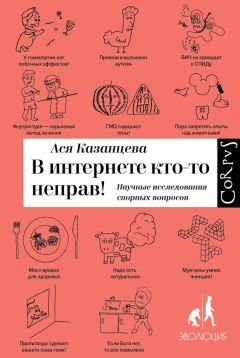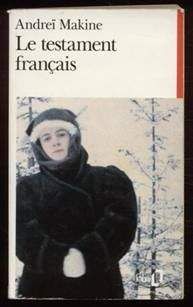Ася Казанцева - Как мозг заставляет нас делать глупости

Помощь проекту
Как мозг заставляет нас делать глупости читать книгу онлайн
1 Schiestl F. P. et al. The Chemistry of Sexual Deception in an Orchid-Wasp Pollination System // Science. 17 October 2003. Vol. 302. No. 5644. Р. 437–438.
2 Wong B. B. M. and Schiestl F. P. How an Orchid Harms Its Pollinator // Proceedings of the Royal Society B. 7 August 2002. Vol. 269. No. 1500. P. 1529–1532.
3 Keverne E. B. The Vomeronasal Organ // Science. 22 October 1999. Vol. 286. No. 5440. Р. 71–720.
4 Schwenk K. Why Snakes Have Forked Tongues // Science. 18 March 1994. Vol. 263. No. 5153. P. 1573–1577.
5 Monti-Bloch L. et al. The Human Vomeronasal System: A Review // Annals of the New York Academy of Sciences. November 1998. Vol. 855. Olfaction and Taste Xii: An International Symposium. Р. 373–389.
6 Mast T. G., Samuelsen C. L. Human Pheromone Detection by the Vomeronasal Organ: Unnecessary for Mate Selection? // Chemical Senses. 2009. Vol. 34. No. 6. P. 529–531.
7 Knecht M.et al. Frequency and Localization of the Putative Vomeronasal Organ in Humans in Relation to Age and Gender / / The Laryngoscope. March 2001. Vol. 111. No. 3. Р. 448–452.
8 McClintock M. K. Menstrual Synchrony and Suppression // Nature. 22 January 1971. Vol. 229. P. 244–245.
9 Stern K., McClintock M. K. Regulation of Ovulation by Human Pheromones // Nature. 12 March 1998. Vol. 392. P. 177–179.
10 Veith J. L. et al. Exposure to Men Influences the Occurrence of Ovulation in Women // Physiology & Behavior. September 1983. Vol. 31. No. 3. P. 313–315.
11 Cutler W. B. et al. Human Axillary Secretions Influence Women’S Menstrual Cycles: The Role of Donor Extract from Men / / Hormones and Behavior. December 1986. Vol. 20. No. 4. P. 463–473.
12 Kirk-Smith M. D., Booth D. A. Effects of Androstenone on Choice of Location in Other’s Presence // Olfaction and taste. 1980. Vol. 7. P. 397–400.
13 Pause B. M. Are Androgen Steroids Acting as Pheromones in Humans? // Physiology & Behavior. 30 October 2004. Vol. 83. No. 1. P. 21–29.
14 На сайте Пятого канала, к сожалению, страницу программы «Прогресс» не сохранили. Большая часть выпусков в Интернете есть, но их приходится специально искать. Сюжет про феромоны на момент написания книжки был доступен по ссылке http://video.yandex.ru/users/lionheart-07/view/91/
15 Filsinger E. E. et al. An Examination of the Effects of Putative Pheromones on Human Judgments // Ethology and Sociobiology. 1985. Vol. 6. No. 4. P. 227–236.
16 Benton D., Wastell V. Effects of Androstenol on Human Sexual Arousal // Biological Psychology. April 1986. Vol. 22. No. 2. P. 141–147.
17 Michael R. P. et al. Behavioral Effects of a Synthetic Mixture of Aliphatic Acids in Rhesus Monkeys (Macaca mulatta) // Hormones and Behavior. December 1977. Vol. 9. № 3. P. 296–308.
18 Michael R. P. et al. Volatile Fatty Acids, «Copulins», in Human Vaginal Secretions // Psychoneuroendocrinology. 1975. Vo l. 1. No. 2. P. 153–163.
19 Steinbach X. et al. Human Pheromones: Do «Copulins» Have an Effect on Men’s Testosterone Levels and Social Behavior? (SFA) // ISHE Conferences, XXI Biennial International Conference on Human Ethology. Vienna, Austria.
20 Grammer K. et al. Human Pheromones and Sexual Attraction // European Journal of Obstetrics & Gynecology and Reproductive Biology. 1 February 2005. Vol. 118. No. 2. P. 135–142.
21 Cutler W. B. et al. Pheromonal Influences on Sociosexual Behavior in Men // Archives of Sexual Behavior. 1998. Vol. 27. No. 1.
22 McCoy N. L., Pitino L. Pheromonal Influences on Sociosexual Behavior in Young Women // Physiology & Behavior. 2002. Vol. 75. P. 367–375.
23 Thomas L. et al. Control of Mating Preferences in Mice by Genes in the Major Histocompatibility Complex // The Journal of Experimental Medicine. 1 November 1976. Vol. 144. No. 5. P. 13 2 4 –1335.
24 Tregenza T., Wedell N. Genetic Compatibility, Mate Choice and Patterns of Parentage: Invited Review // Molecular Ecology. August 2000. Vol. 9. No. 8. Р. 1013–1027.
25 Bernatchez L., Landry C. MHC Studies in Nonmodel Vertebrates: What Have We Learned about Natural Selection in 15 Ye a r s? // Journal of Evolutionary Biology. May 2003. Vol. 16. No. 3. Р. 363–377.
26 Pamer E., Cresswell P. Mechanisms of MHC Class I-Restricted Antigen Processing // Annual Review of Immunology. April 1998. Vol. 16. Р. 323–358.
27 http://www.ebi.ac.uk/ipd/imgt/hla/stats.html — база данных по иммунным полиморфизмам.
28 Трансплантация костного мозга. Применение при лечении онкологических и других заболеваний. Брошюра благотворительного фонда «Подари жизнь», Москва, 2010.
29 http://lenagr.livejournal.com/110986.html — пост Лены Грачевой о найденных совпадениях в петербургском регистре доноров костного мозга.
30 http://advita.ru/donor_donor.php — инструкции для тех, кто хочет попасть в регистр потенциальных доноров костного мозга.
31 Sommer S. The Importance of Immune Gene Variability (MHC) in Evolutionary Ecology and Conservation // Frontiers in Zoology. 2005. 2:16.
32 Wedekind C. et al. MHC-Dependent Mate Preferences in Humans // Proceedings of the Royal Society B. 1995. Vol. 260. P. 245–249.
33 Ober C. et al. HLA and Mate Choice in Humans // The American Journal of Human Genetics. September 1997. Vol. 61. No. 3. P. 497–504.
34 Hedrick P. W., Black F. L. HLA and Mate Selection: No Evidence in South Amerindians // The American Journal of Human Genetics. September 1997. Vol. 61. No. 3. P. 505–511.
35 Chaix R. et al. Is Mate Choice in Humans MHC — Dependent? // PLoS Genetics. 2008. 4 (9): e1000184.
36 Jacob S. et al. Paternally Inherited HLA Alleles Are Associated with Women’S Choice of Male Odor // Nature Genetics. February 2002. Vol. 30. No. 2. P. 175–179.
37 Creus M. et al. Parental Human Leukocyte Antigens and Implantation Failure After In-Vitro Fertilization // Human Reproduction. 1998. Vol. 13. No. 1. Р. 39–43.
Глава 9. Почему в ноябре так трудно жить и работать
1 http://www.happyplanetindex.org/data/ — Happy Planet Index.
2 http://www.unodc.org/documents/data-and-analysis/statistics/Homicide/Globa_study_on_homicide_2011_web.pdf — отчет об убийствах в мире от ООН.
3 http://www.wingia.com/web/files/news/38/file/38.pdf — Global Barometer of Hope and Happiness.
4 Whitehead B. S. Winter Seasonal Affective Disorder: A Glo bal, Biocultural Perspective. На момент написания книги обзор был доступен на сайте Университета Алабамы: http://anthropology.ua.edu/bindon/ant570/papers/whitehead.pdf
5 Magnusson A., Partonen T. The Diagnosis, Symptomatology, and Epidemiology of Seasonal Affective Disorder // CNS Spectrums. 2005. Vol. 10. No. 8. P. 625–634.
6 Leibenluft E. et al. Gender Differences in Seasonal Affective Disorder // Depression. 1995 Vo l. 3. No. 1–2. Р. 13–19.
7 Suhail K., Cochrane R. Seasonal Changes in Affective State in Samples of Asian and White Women // Social Psychiatry and Psychiatric Epidemiology. April 1997. Vol. 32. No. 3. P. 149–157.
8 Danilenko K. V. et al. Seasonal Depression and Sleep Disturbances in Alaska and Siberia: a Pilot Study // A r c t i c medical research. 1991. Suppl. P. 281–284.
9 Stuhlmiller C. M. Understanding Seasonal Affective Disorder and Experiences in Northern Norway // Journal of Nursing Scholarship. June 1998. Vol. 30. No. 2. Р. 151–156.
10 Levey I. L. Effects of Pinealectomy and Melatonin Injections at Different Seasons on Ovarian Activity in the Lizard Anolis carolinensis // Journal of Experimental Zoology. August 1973. Vo l. 185. No. 2. P. 169–174.
11 Pandi-Perumal S. R. et al. Physiological Effects of Melatonin: Role of Melatonin Receptors and Signal Transduction Pathways // Progress in Neurobiology. July 2008. Vol. 85. No. 3. P. 335–353.
12 Stickgold R. Sleep-Dependent Memory Consolidation / / Nature. 27 October 2005. Vol. 437. P. 1272–1278.
13 Megdal S. P.et al. Night Work and Breast Cancer Risk:
A Systematic Review and Meta-Analysis // European Journal of Cancer. September 2005. Vol. 41. No. 13. P. 2023–2032.
14 Srinivasan V. et al. Melatonin and Human Reproduction: Shedding Light on the Darkness Hormone // Gynecological Endocrinology. December 2009. Vol. 25. No. 12. P. 779–785.
15 Ashkenazy T. et al. We Are in the Dark Here: Induction of Depression— and Anxiety-Like Behaviours in the Diurnal Fat Sand Rat, by Short Daylight or Melatonin Injections // The International Journal of Neuropsychopharmacology. February 2009. Vol. 12. No. 1. Р. 83–93.
16 Wehr T. A. et al. A Circadian Signal of Change of Season in Patients With Seasonal Affective Disorder // Archives of General Psychiatry. 2001. Vol. 58. No. 12. P. 1108–1114.
17 Кочетков Я. A. Мелатонин и депрессия // Журнал неврологии и психиатрии. 2007. Nо. 6. C. 79–83.
18 Seasonal Affective Disorder. Practice and Research. 2nd edition / еdited by T. Partonen and S. R. Pandi-Perumal. — Oxford University Press, 2010.
19 Partonen T. et al. Three Circadian Clock Genes Per2, Arntl, and Npas2 Contribute to Winter Depression // Annals of Medicine. 2007. Vol. 39. No. 3. P. 229–238.
20 Westrin A., Lam R. W. Seasonal Affective Disorder: A Clinical Update // Annals of Clinical Psychiatry. 2007. Vol. 19. No. 4. P. 239–246.
21 Wirz-Justice A. et al. Light Therapy in Seasonal Affective Disorder Is Independent of Time of Day or Circadian Phase / / Archives of General Psychiatry. 1993. Vol. 50. No. 12. P. 929–937.
22 Stewart W. F. et al. Cost of Lost Productive Work Time Among US Workers with Depression // JAMA. 18 June 2003. Vo l. 289. No. 23. P. 3135–3144.
Глава 10. Отсутствие новостей — лучшая новость?
1 Tinbergen N. «Derived» Activities; Their Causation, Biological Significance, Origin, and Emancipation During Evolution // The Quarterly Review of Biology. March 1952. Vo l. 27. No. 1. Р. 1–32.
2 Schino G. et al. Primate Displacement Activities as an Ethopharmacological Model of Anxiety // Anxiety. 1996. Vol. 2. No. 4. P. 186–191.
3 На самом деле Селье участвовал в открытии двух институтов стресса: в 1978 году в США (http://www.stress.org/) и в 1979 году — в Канаде (http://www.stresscanada.org/). Первым в мире почему-то чаще называют канадский; главное — правильное позиционирование!
4 Селье Г. Стресс без дистресса. Перевод: И. Хорол, Александр Лук. — М.: Прогресс, 1982 (я использовала электронную версию — http://lib.ru/PSIHO/SELYE/distree.txt).
























